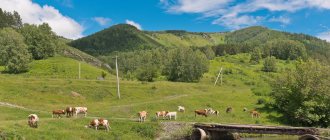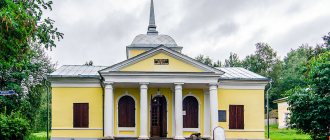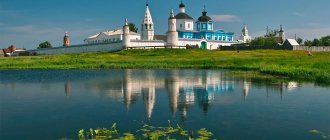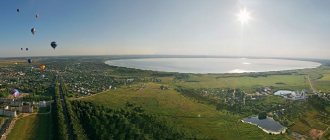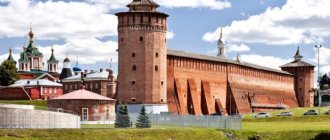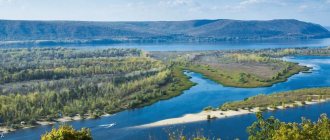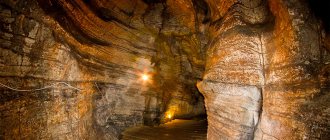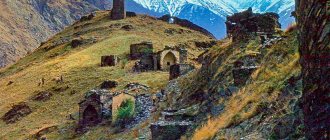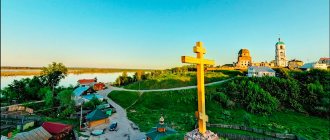Baltiysk is not the most tourist city in the Kaliningrad region. But the good thing is that you can still find romance and secluded places there. Many even consider Baltiysk a closed city. Although in fact, Russian citizens can visit the former German Pillau without hindrance.
When they say that Kaliningrad is the western point of the Russian Federation, they mean not the regional center itself, but Baltiysk. It is as close as possible to Poland.
Gdansk and Gdynia - once Prussian cities like Baltiysk - on a clear day and with a little imagination you can almost see them from the shore. True, to get there by car, you need to take a detour through Kaliningrad (∼ 220 km). But by sea or across the Baltic Spit it’s a stone’s throw to Poland.
In this article we will tell you what you can see in Baltiysk on your own, and what is more interesting with a tour. About the city itself and its features.
The best attractions in the vicinity of Baltiysk:
Fort "Vostochny"
Fort "Vostochny"
It was erected at the end of the 19th century in accordance with the new requirements for fortification structures of that time. It was intended for artillery protection of the city from the sea and the road leading to the park. The fort, shaped like a compressed hexagon, is surrounded by a deep moat.
The historical building is not available for internal inspection, because... is privately owned. However, the outside has a well-groomed appearance and is in good condition.
Address: Primorskoye sh., 12, Baltiysk, Russia
Opening hours: daily
Lochstedt Castle
Lochstedt Castle
Was founded by the famous Crusader Order in the 13th century. For several centuries in a row they used it as a strategically important object for controlling the conquered territory. There was also an amber storage facility here. With the collapse of the Order, the castle began to fall into disrepair.
In 1945, the remains of the building were heavily damaged by bombing. Now the castle is a ruin, in which one can discern its former greatness. Part of the arched wall and underground structures have been preserved. Nearby are the remains of an ancient cemetery.
Address: Baltiysk, Kaliningrad region, southeast of the checkpoint at the entrance to the city
Opening hours: daily
Free admission
Sculpture of a Woman with a Child
Another sculpture dedicated to a marine theme. The monument also has a second name - the Sailor's Wife. The attraction is located on Morskoy Boulevard, welcoming all ships arriving at the Baltic port.
The name itself says that the monument depicts a woman holding a child in her arms. “The Sailor’s Wife” looks out over the expanse of the Baltic Sea, rejoicing at the return of travelers from long voyages.
The sculpture is also considered one of the most important and recognizable symbols of the city.
What to visit in Baltiysk for free:
Temple of the Holy Blessed Prince Alexander Nevsky
Temple of the Holy Blessed Prince Alexander Nevsky
The church is an example of modern temple architecture. Its construction began in 2008. Initially, the building was founded as a church of St. Fedora Ushakova.
Then it turned out that the church is located as one of the sides of the cross in the complex of the construction project named after. Alexander Nevsky. Therefore, in 2011, the Synod decided to rename it.
Address: Lenin Avenue, 59A
Opening hours: daily
Free admission
Cathedral of St. George of the Baltic Fleet
Cathedral of St. George of the Baltic Fleet
The neo-Gothic building is located on the way to the embankment. It was built in 1866, originally as a Lutheran church. During the siege of Pillau in 1945, the structure received significant damage and was restored during the Soviet years.
Inside it is decorated with a carved wooden iconostasis skillfully made by craftsmen from the Smolensk region. Also in the Cathedral there is a particle of the relics of Admiral F. Ushakov, canonized.
Address: st. Admiral Kuznetsova, 3
Opening hours: 10:00 to 17:00 Mon-Fri; 08:00-17:00 Sat-Sun: 07:30-17:00 on holidays
Free admission
Official website: vk.com/club147586568
Rectory
Rectory
Built in 1910, the building was part of the complex of the Lutheran Church “Mary the Star of the Sea”. The house was intended for the life of a pastor who conducted services in a Catholic church. And the church itself was famous for its high tower.
Granite for its decoration was brought from the Danish island of Bornholm. During the assault in 1945, the beautiful Gothic-style building was completely destroyed. In memory of him, only the Rectory has been preserved, almost on the very seashore.
Address: Baltiysk, st. Chekhova, 2
Opening hours: daily from 9:00 to 20:00
Free admission
Fort Calm
Fort Calm
The remains of a structure built in 1889, which was part of the defensive complex of the Pillau fortress. It was named after the Prussian military leader, General Gustav von Stiele. At the end of the Second World War, the fort housed a mine depot in which ammunition detonated. As a result of the explosion, the center of the structure was a giant crater about 30 m deep.
After this event, only part of the outer walls, the entrance gate and several utility rooms remained from the fort.
Address: Mayakovsky street, 31
Opening hours: daily
Free admission
Infantry barracks water tower
Baltiysk, whose sights never cease to amaze with its rich history, has many more interesting historical places. The water tower of the infantry barracks is also included in this list. The tall building, reaching a height of 30 m, has 3 levels and a round shape. The highest point of the structure is decorated with a weather vane.
Recently, the tower was repainted in “Christmas” red and white colors, which made it more attractive to tourists. This unusual landmark was built in 1905, along with other similar buildings, to supply water to city residents. The tower is located next to the building of the Baltic Fleet institutions in the southern side of Baltiysk.
Where to go in Baltiysk and what else to see:
Museum of the Baltic Fleet
Museum of the Baltic Fleet
Located in a beautiful old building dating from 1903, which originally housed the local court. Currently, the museum's collection includes more than 200 thousand exhibits dedicated to the history of the Russian fleet.
All three floors of the building, which is the cultural center of Pillau, are given over to exhibitions. Here you can see authentic weapons, uniforms and award badges of Soviet and Russian sailors, ship models and other exhibits. It is recommended to take a tour of the museum with a guide.
Address: st. Kronstadtskaya, 1
Opening hours: Wed-Sun from 11:00 to 18:00
Admission: adult citizens of the Russian Federation – 200 rubles.
Official website :: navalmuseum.ru/filials/baltic_fleet
Pillau Fortress
Pillau Fortress
The ancient citadel is the hallmark of the city and is recommended for a mandatory visit. The fortification structure was founded in 1626 by the Swedes; 50 years later its construction was completed by the Prussians. The fort has the shape of a five-pointed star, where each “ray” has its own name.
The Pillau fortress is covered in legends. It is believed that Peter I learned the secrets of artillery skill here. And also that the Germans hid the famous Amber Room in the basements of the fort. The fortress is accessible for inspection; regular excursions are held.
Address: Baltiysk, Kaliningrad region.
Opening hours: daily
Admission: entrance – 100 rubles, excursion – 200 rubles. (sold at the Baltic Fleet Museum)
Official website: https://navalmuseum.ru/filials/baltic_fleet
Hotel "Golden Anchor"
Hotel "Golden Anchor"
The Ostsee-Hotel or "Baltic Hotel" was erected in 1909 as Pillau's main hotel building. Over the years of its existence, the hotel has undergone a number of reconstructions, but has not stopped operating.
Only during the Second World War did it turn into an evacuation point, but after the end of the war it continued to receive guests under the name “Golden Anchor”. Over the years, famous actors, musicians, writers and other famous personalities stayed here. The hotel still operates for its intended purpose.
Address: Baltiysk, Morskoy Boulevard, 6
Opening hours: daily
Free admission
Official website: https://zolotoj-yakor.navse360.ru/
Naval base of the Baltic Fleet
Naval base of the Baltic Fleet
Since 1956, the largest Baltic Fleet base in the region has been located in Baltiysk. The newest sea vessels are located here. On Navy Day, parades are held and fireworks are launched over the sea. Since 2012, large-scale work has been carried out to reconstruct the berths and modernize other facilities of the Base.
Address: Baltiysk; GPS: 54°38'10.83"N, 19°54'7.79"E
Opening hours: daily
Free admission
Baltiysk embankment
Baltiysk embankment
The city's embankment is called Morskoy Boulevard. Its length is 1.2 km along the canal connecting the Kaliningrad Bay with the sea. The embankment, paved with concrete slabs, with a pier extending into the Baltic Sea, is an excellent place for walking.
Here you can easily see numerous ships. Flocks of almost tame swans swim in the coastal waters, which tourists feed with bread.
Address: st. Artilleryskaya, Baltiysk, Kaliningrad region
Opening hours: daily
Free admission
Museum on the Baltic Spit
Museum on the Baltic Spit
Founded by a local resident, local historian Nadymova. The museum is also known as the “Old Lunette”, because... located in one of the ancient buildings of the defensive complex.
The exhibition introduces the military history of the city and its interesting little-known facts. The museum has a cinema and a cafe with homemade cakes.
Address: Morskaya embankment, 7A
Opening hours: 10.00 - 18.00 daily, seven days a week
Free admission
Official website: https://vk.com/public149167690
Museum of the History of the Vistula Spit
Museum of the History of the Vistula Spit
An unusual museum telling the history of Spit is located in the classrooms of a former school. The excursion is conducted by a local history teacher, local historian Borisov, who is the creator of the exhibition.
Among the exhibits are real historical artifacts found during archaeological excavations, as well as other antiquities.
Address: Baltiysk, pos. Kosa, Shkolnaya st., 16
Opening hours: daily
Free admission
Tours in the Kaliningrad region 2021
An easy way to see the beauty of the Kaliningrad region is sightseeing tours. In 4-6 days you can visit the Curonian Spit, Yantarny, Zelenogradsk and other parts of the Amber region. Prices - from 7900 to 20500 rubles. (+ cashback). Accommodation in hotels in Kaliningrad is included in the price. Popular tours:
"Beauties of the Amber Coast"
Duration: 6 days / 5 nights
A more detailed acquaintance with the region (from 20,500 rubles). With accommodation in hotels in Kaliningrad and Svetlogorsk (+ free day at the Kaliningrad beach resort). Excursions to the most beautiful places - the Curonian Spit and the Amber Region - are included in the price. An optional course in Baltiysk is possible.
From 20500 rub. on Bolshayastrana
Excursion tour to hospitable Kaliningrad
Duration: 5 days / 4 nights
Basic tour for exploring Kaliningrad and its surroundings. The program includes trips to Yantarny, Svetlogorsk, Baltiysk, Curonian Spit. And, of course, a sightseeing tour of the city with possible tastings of beer and local delicacies (optional options available). Tour dates are every week until November.
From 13400 rub. on Bolshayastrana
Sights of Baltiysk in one day
Baltic lighthouse
Baltic lighthouse
The iconic building was erected in 1813 and is an architectural monument of regional significance. Thanks to its height of 33 m, the lighthouse illuminated the path for ships within a radius of 16 nautical miles.
According to legends, during all the years of its existence the lights have never gone out here. To produce a powerful beam, kerosene and vegetable oil were first used, and since 1916, electricity. The lighthouse is still in working order.
Address: Morskoy Boulevard, 9
Opening hours: daily
Free admission
Infantry barracks
Infantry barracks
They are practically a separate military town on the territory of the fortified city of Pillau. The complex was erected in 1904 to house the local garrison to provide them with rest after serving. It is divided into two parts - Northern and Southern.
The barracks themselves were located here, as well as military headquarters, warehouses, and other outbuildings. Before the First World War, there was even a casino for officers on the territory of the barracks. The ensemble of headquarters buildings is an architectural monument of the region.
Address: Red Army Street, 19
Opening hours: daily
Free admission
Abandoned Neutif airfield
Abandoned Neutif airfield
The military base was built in 1939. During its construction, solutions unique for that time were used. Thanks to them, the runways could be operated in any weather.
The airfield was used by the Germans during the Second World War, and after by the Soviet navy. Since 1991, the building has been closed and fallen into disrepair. Nowadays, several objects and runways from a century ago have been preserved and are available for inspection.
Address: Baltic Spit
When to visit: daily
Free admission
Monument to Peter I
Monument to Peter I
It is known that the famous reformer emperor loved these places and visited here regularly. Peter I came to Pillau not only for walks, but also to learn artillery from the Prussians. Therefore, in 1998, in honor of the celebration of the 300th anniversary of the Baltic Fleet, this monument was erected. The height of the memorial figure is more than 6 m.
Address: blvd. Nautical
When to visit: daily
Visit: free
Boat on a pedestal
Boat on a pedestal
The ship is installed on a pedestal and is part of the Baltic Glory Square complex. It was created in memory of the liberation of Pillau in 1945. The complex was founded on the site of the bloodiest battles. Boat number 36 took part in hostilities - Soviet sailors used it to shoot down enemy ships with torpedoes.
Address: pl. Baltic glory
When to visit: daily
Visit: free
City Park named after Golovko
City Park named after Golovko
A popular holiday destination among city residents and tourists, it is located in one of the most picturesque corners of Baltiysk. The park was laid out on the shores of the Gulf of Gdansk in the 19th century to protect the fort from advancing sand dunes.
Currently, various events and concerts are constantly held here. There are cafes and children's attractions.
Address: st. Severny Mol, 7, Baltiysk, Kaliningrad region.
Opening hours: daily
Free admission
Parks and monuments, streets
Baltiysk embankment
Address: st. Artillery
The Baltiysk embankment is also called Morsky Boulevard, although in fact it is a road of not very good quality, paved with concrete slabs. It stretches along the canal that connects the Kaliningrad Bay with the Baltic Sea for 1.2 km.
The boulevard starts from Red Army Street and ends at the city beach; its continuation is the long Baltic pier, which goes far into the sea. The coastal strip is occupied by concrete breakwaters, which make access to the water difficult.
Ships, including military ones, moor along the embankment, and a large flock of swans constantly cruises. The birds are almost tame and happily eat the offered bread.
On the embankment there is a monument to Elizabeth the First on horseback. Near the monument to the Empress there is a parking lot, a modest cafe and toilets.
North and south breakwaters
These breakwaters are considered the sea gates of Baltiysk; they were built in the 1880s to protect the strait from the violence of the elements and maintain the fairway.
The structures were erected from stones and anchors, the voids between them were filled with cement mortar. The height of the piers is 3 meters, and the width is 8.
There is a tower with a green signal light on the South Pier, and a red one on the North Pier. Together with the beacon signal, these lights give ships additional guidance even in the worst visibility conditions. The distance between the lights is 361.6 meters.
German Memorial Cemetery
Address: east of the tip of the Northern Pier, territory of the old cemetery Opening hours: May-September 9:00-18:00, October-April 9:00-16:00
International memorial burial ground, opened in 2000. Restoration and reburial work has been carried out since 1990.
The remains of soldiers of the German army and the civilian population of the city, passengers of the Wilhelm Gustloff liner, prisoners of the Forsteil camp - a total of 13.5 thousand people - are buried here. Most of the graves date from 1944 and 1945.
From the entrance there is a gravel path to a memorial sign in the form of three black crosses; memorial plaques with the names of the buried and symbolic concrete crosses are installed on the territory. The area is well-groomed, clean, there are benches.
Best hotels in Baltiysk
Related materials:
- 33 attractions of Bakhchisaray that are worth visiting
- 42 best must-see attractions in Rome
- 37 must-see attractions in Dubai
- 31 attractions of Novorossiysk to visit
- 32 sights of Kronstadt that are worth visiting
- 43 best attractions in Minsk,…
- 26 attractions of Svetlogorsk that…
- 28 best attractions in Belgorod,…
- 25 sights of Olenevka that are worth seeing
Did you like the article? Share with friends:
Baltic Spit
Baltiysk, whose sights are difficult to enumerate at once, also has another truly amazing place called the “Baltic Spit”. Interestingly, this attraction is more like a separate city, since it is located next to Baltiysk in the form of a small island. The spit can only be reached by water transport.
Permission for tourist trips to this place was received only in 2010. Previously, entry was allowed exclusively to Russian citizens and only through a checkpoint.
Consequently, tourism here is not very well developed, but this is fully compensated by the beautiful scenery and unique nature of the Baltic spit. Despite the tiny area, even 2 villages could be accommodated here: Rybachy and Kosa.
Baltiysk is a beautiful seaside city, where every corner is imbued with history. Residents proudly honor the memory of their heroes and successfully introduce it to visiting tourists. The sights of the city are of great interest to historians and travelers who visit it.
Article design: Vladimir the Great
Latvia, Jurmala
The most famous Baltic resort, of course, is Jurmala. Russian tourists have long appreciated the large resort on the shores of the Gulf of Riga. It combines beautiful landscapes, a rich cultural program and health resort organizations.
The size and versatility of Jurmala allow every traveler to choose a holiday to suit his taste: families with children will go to a water park or attractions, young people will enjoy night discos, and people tired of the metropolis will relax in small, quiet sanatoriums.
A holiday in Jurmala costs from $600 per week, but there is so much entertainment here that you will probably spend another half of the amount on them.
Pages of history
Before getting acquainted with modern Baltiysk, I suggest looking through the pages of its history.
According to sources, the German city of Pillau arose as a result of the merger of several villages. The first documented mention of it dates back to 1430. The inhabitants of Pillau were then engaged in fishing.
In 1497, a port between the sea and the freshwater bay. In 1501, after a strong storm, the strait became navigable and a harbor . After this, a system of shelters, fortifications and port warehouses begins to be built in Pillau.
During the Thirty Years' War, the harbor was occupied by the Swedes after their victory over the Polish-Lithuanian Commonwealth. They build a star-shaped fort at Pillau.
In 1679, the creation of a merchant and military fleet . It is no coincidence that Peter the Great came here as part of the Great Embassy to study the experience of building fortresses and ships.
In 1725, Pillau acquired the status of a city . As a result of the Seven Years' War, it was occupied by Russian troops. In June 1807, Pillau was stormed by Napoleon, but a temporary truce was reached a couple of months later. In 1812, Napoleon was forced to retreat from Pillau.
The city, located on the Baltic Spit, becomes one of the outposts of Prussia . After the First World War, under the terms of the Treaty of Versailles, East Prussia was cut off from Germany. It was then that the role of Pillau as a trading port increased. In 1921, the city became a base for the German fleet and free access to the city was closed.
On April 25, 1945, Soviet troops under the command of Colonel General Galitsky captured Pillau by storm. The castle was completely destroyed, but the fortress survived.
On November 27, 1946, by decree of the Presidium of the Supreme Soviet of the RSFSR, the city of Pillau, Primorsky District, was renamed the city of Baltiysk.
In the post-war years, the city was closed to visitors because it was a border zone. It was possible to get there only by invitation, which was issued by the military commandant's office.
In 2000, it was here that the main Russian naval parade took place. And in 2003, the city already celebrated the 300th anniversary of the Baltic Fleet.
______________________________
Do you feel how much this city has gone through?
Now let's walk around Baltiysk. I invite you to start our walk around the city from Morskoy Boulevard.
What sanatoriums are there?
Almost all sanatoriums in the city of Baltiysk are considered popular. Prices for accommodation in sanatoriums are similar to prices for hotels. Let's list a few examples:
- State House "Baltic Breeze". Phone for inquiries: +7 (911) 455-25-56.
- GD "Villa-N". Address: st. A. Romanova, 6-a.
- Hotel "Golden Orchid". Tel., +7 (4012) 38-63-51.
- State House "Paradise of Prussia". Tel..
Some hotels or guest houses , providing services to guests, combine the functions of vacation housing and sanatorium programs . For example, having visited the Valentina Hotel, the guest house “Paradise of Prussia” and other places, visitors can not only relax, but also undergo an excellent healing course with mineral waters, massages and other procedures.
Germany, Rügen
The Germans call the Baltic Sea the Eastern Sea and love to relax on it with the whole family. The “free body” culture and concern for one’s own health, characteristic of the Germans, has led to the construction of many holiday homes, hotels and private houses on the coast, where you can rent a room overlooking the rugged, rocky coast.
However, one of the resorts is worth mentioning separately - this is the island of Rügen and the seven-kilometer Prora beach located on it. On maps of the mid-20th century, this area was encrypted and for a reason - here the Nazis were building their own resort, capable of accommodating more than twenty thousand people at a time. Huge buildings, concert and sports halls, pristine beaches - all this was abandoned in 1937 and stood there for many years until the territory was purchased at the end of the last century. Now there is a youth resort here, where you can relax inexpensively and feel like a stalker, looking for traces of Nazi Germany in the vast territory of the resort.
By the way, it’s worth considering that more than half of the beaches here are nudist, so if you have a negative attitude towards such manifestations of freedom, look for sections of the coast without the FKK sign.
A holiday on the island of Rügen will cost you about $700, and accommodation in a youth hotel is cheaper the younger you are.
